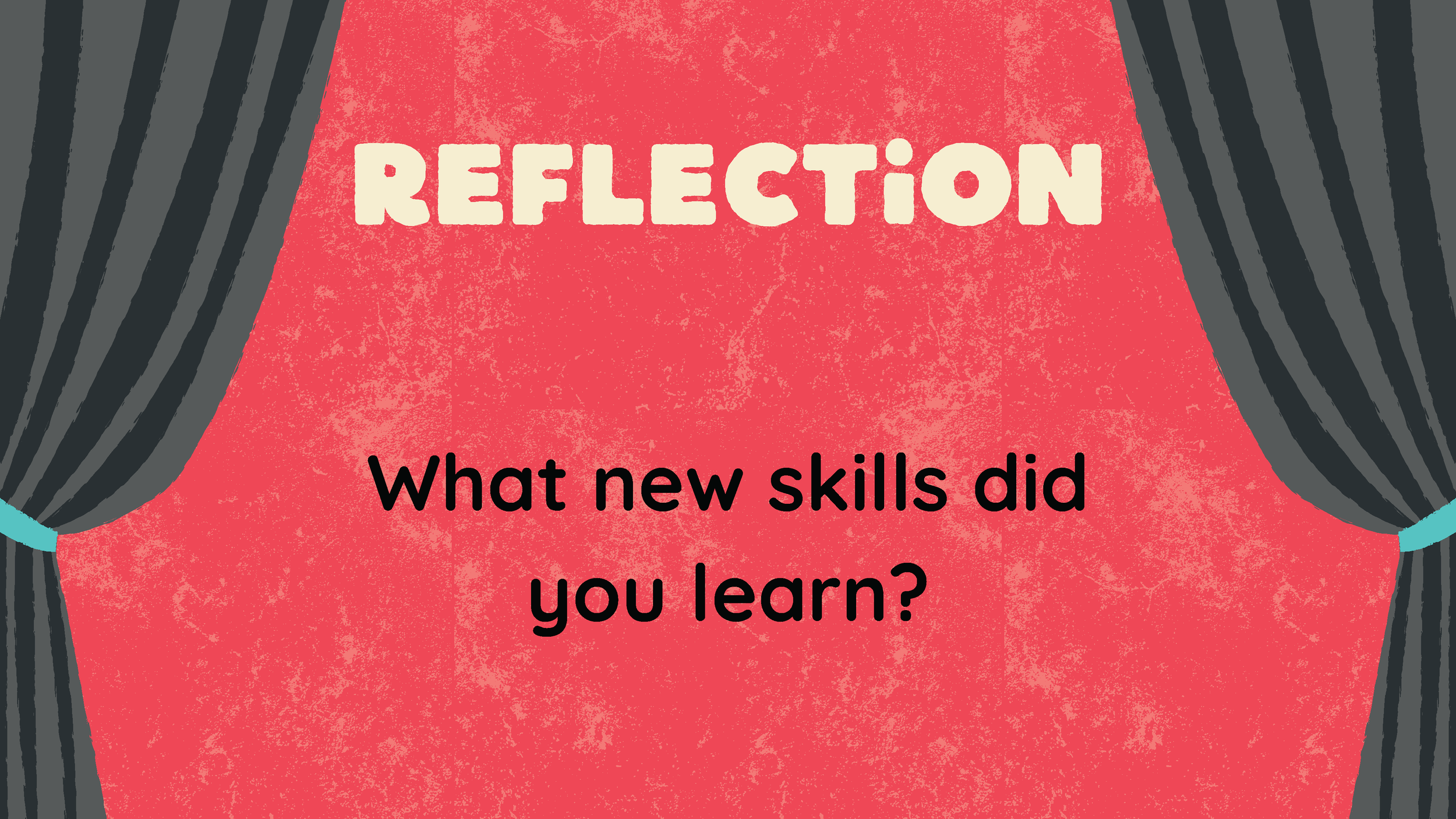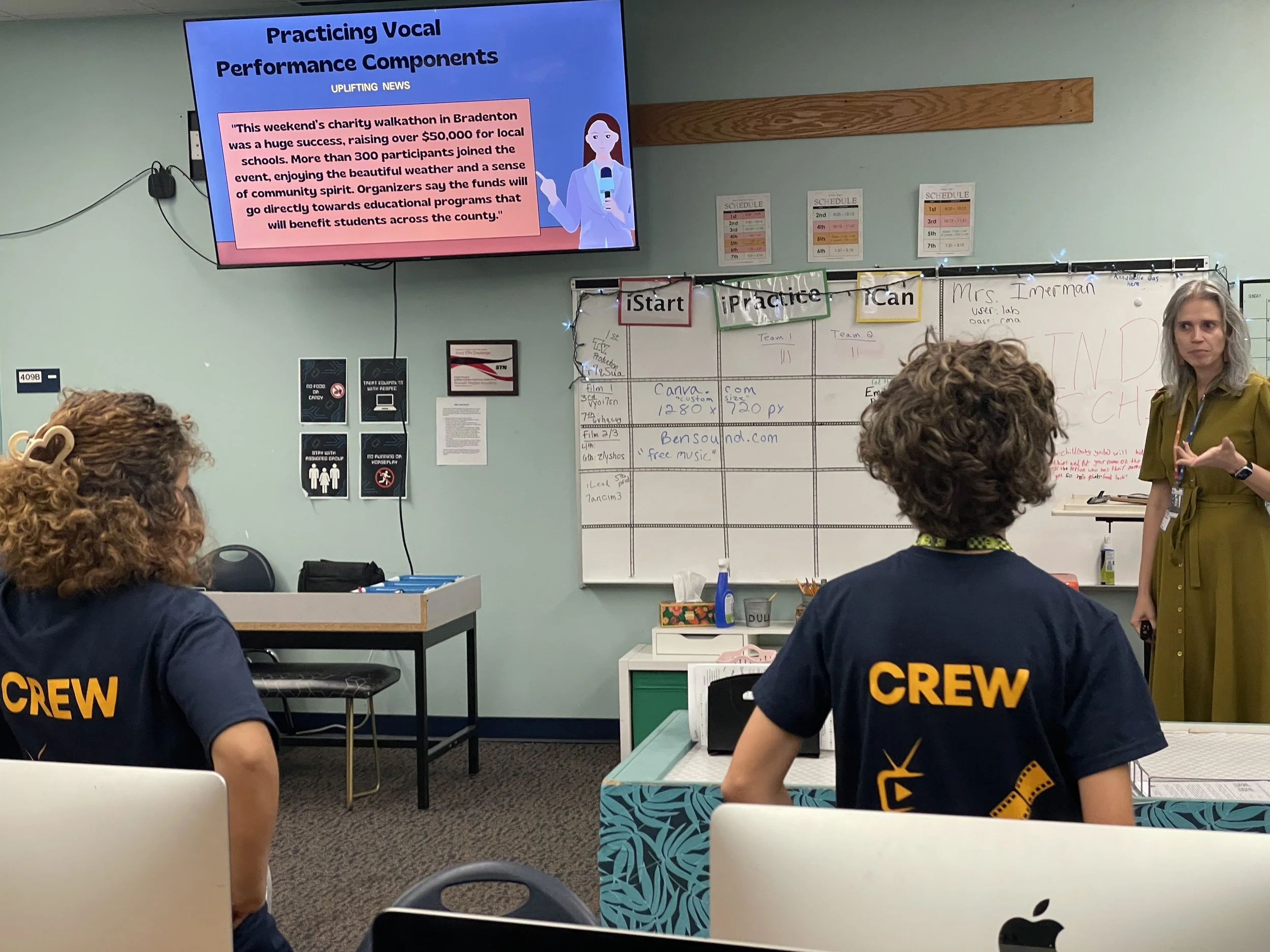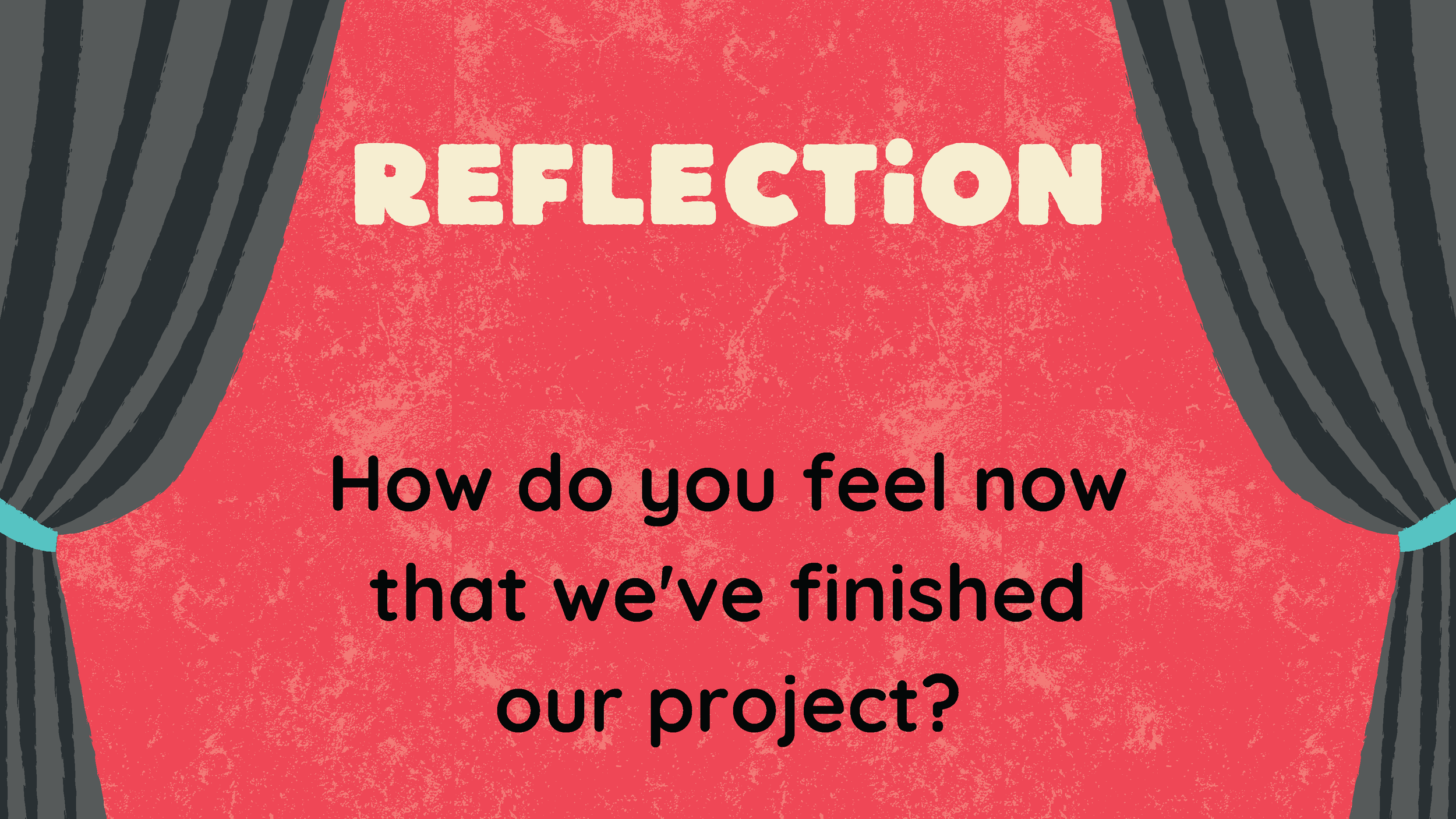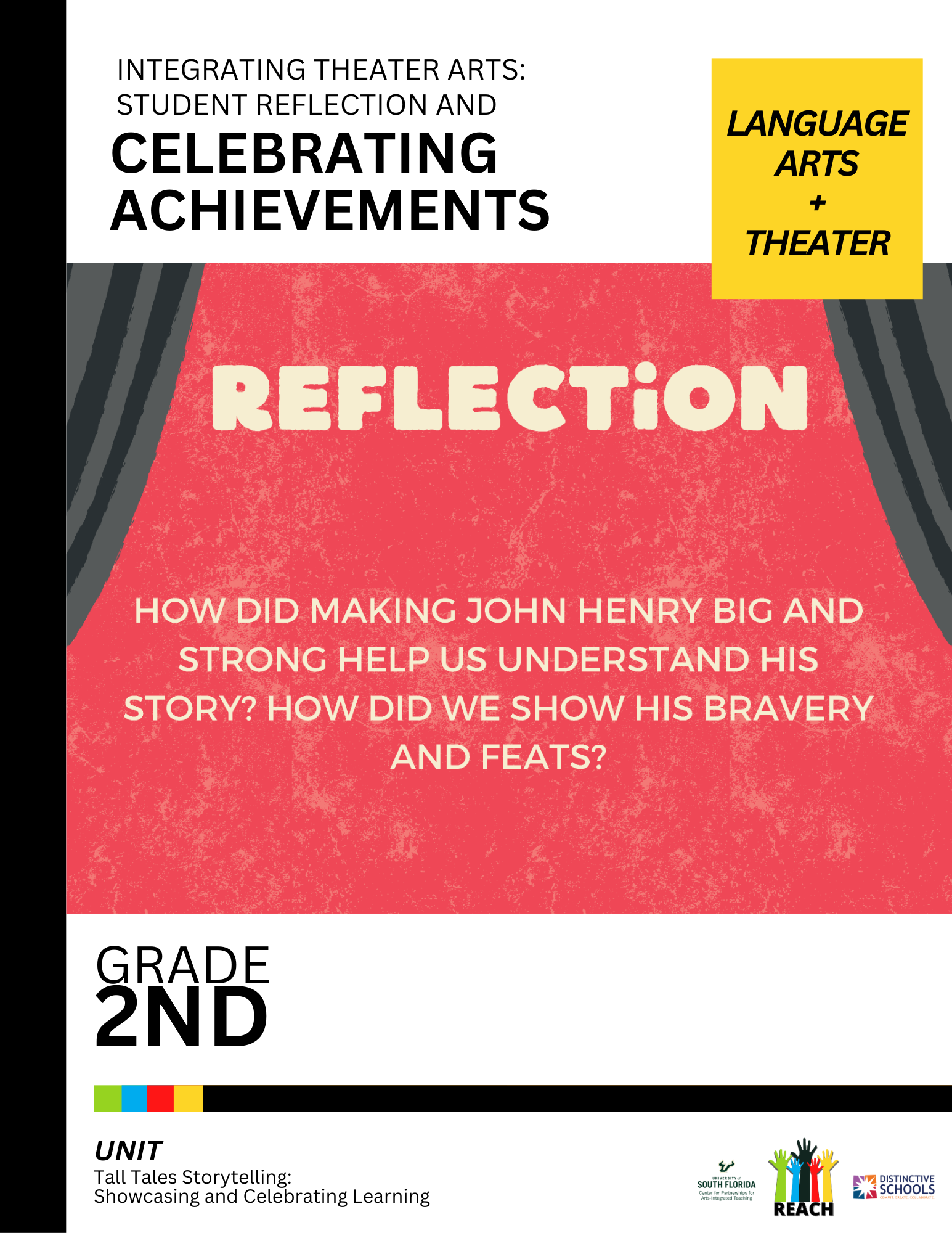Tall Tales Storytelling: Showcasing and Celebrating Learning
Integrating Theater Arts:
Student Reflection &
Celebrating Achievements
2nd Grade • English Language Arts (ELA) & Theater
Lesson Overview: This collaborative lesson focuses on showcasing student learning in language arts and theater through "sneak previews" of Tall Tales and Fairy Tales performances, emphasizing reflection, celebration, and accessibility.
Learning Objectives | Students Will:
Showcase the sneak previews to an audience.
Reflect on the learning journey and the skills developed throughout the project.
Celebrate the achievements and progress made by all students.
Lesson Process: This lesson contains multifaceted learning objectives. Students define clear, measurable learning components, express individual perspectives through theatre techniques, and connect tall tales to their own backgrounds. They also learn to present sneak previews with clarity, engage in reflective discussions about their learning journey, and celebrate achievements while demonstrating skills like teamwork, public speaking, and creative thinking. Ultimately, the lesson seeks to amplify student voice and promote a supportive and engaging learning environment.
Overall Significance: This innovative lesson demonstrates the power of arts integration by integrating theater techniques with language arts content to create a meaningful learning experience that deepens student understanding of storytelling. By combining physical expression with narrative skills, students engage with academic content through multiple modalities, allowing them to connect with the material in personally meaningful ways. The culminating showcase and celebration serve as motivators throughout the learning process, giving students a clear purpose for their work while building confidence as they share their creative achievements with peers. Their presentations not only validate students' artistic and academic growth but also create an authentic learning experience that transforms their storytelling from a classroom exercise into a meaningful performance event that celebrates both individual and collective achievement. The lesson fosters a holistic environment, enhancing student participation and engagement by incorporating arts into the curriculum.
Time Required:
1 hour and 40 minutes
Materials List:
Student final scripts
Performance Assessment
Green screen
A camera
Assessment :
The lesson includes activities for reflection and assessment, where students are prompted to think about their learning journey and the skills they have developed.
Teaching Artist: Observe students' participation and engagement in all activities, noticing how they construct their understanding.
Teacher Outcomes:
Team Building: Students will engage in collaborative and
discussions contributing to their own cultural insights and experiences.
Content Teacher: Students will be able to identify key elements of a tall tale and build vocabulary skills.
Teaching Artist: Create a supportive, safe, and engaging learning environment for students to engage in theater activities and collaborate with each other.



Lesson
Activities & Instructions
The Activities & Instructions section provides a structured sequence of learning experiences, guiding educators through engaging, interactive lessons.
Lesson Activities
-
Greet students and provide an overview of the day’s events, emphasizing the importance of showcasing their work and reflecting on their learning.
Present the sneak previews to an audience.
Reflect on the learning journey and provide feedback.
Celebrate the achievements of all students.
-
Lead students through final warm-up exercises to prepare for their performance.
Breathing and Focus: Engage students in deep breathing exercises to calm nerves and focus their energy
Group Affirmations: Students share positive affirmations with their group members, boosting confidence and team spirit.
-
Students perform their sneak previews for an invited audience of parents, guests, and peers.
Ensure each group has the time and space needed to present their sneak preview.
The teaching artist and classroom teacher facilitate the transitions between groups and provide support as needed.
-
After the presentations, lead a discussion about the experience of performing and what students learned from the project.
Ask students to reflect on what they found most challenging and rewarding during the process.
Encourage students to share specific skills they developed, such as teamwork, public speaking, actor’s tools, storytelling or creative thinking.
-
Guide students through a structured reflection on their individual and group experiences, using prompts to help them articulate their thoughts.
Provide prompts such as “What was your favorite part of the project?” or “How did you grow as a performer or storyteller?” “What did you learn this week?”
Facilitate a discussion where students can share their reflections with the group, fostering a sense of closure and accomplishment.
-
Celebrate the students’ achievements by providing positive feedback and recognizing their hard work.
The teaching artist and classroom teacher highlight the unique contributions of each group, celebrating their creativity and effort.
-
Thank the students for their hard work and participation and encourage them to continue exploring storytelling and performance in the future.
Conclude the session with a positive and encouraging farewell, leaving students with a sense of accomplishment and motivation.
NATIONAL CORE ARTS STANDARDS
-
Anchor Standard 1
Generate and conceptualize artistic ideas and work.Anchor Standard 2
Organize and develop artistic ideas and work. -
Anchor Standard 4
Analyze, interpret, and select artistic work for presentation.Anchor Standard 5
Develop and refine artistic work for presentation. -
Anchor Standard 7
Perceive and analyze artistic work.Anchor Standard 8
Interpret intent and meaning in artistic work.Anchor Standard 9
Apply criteria to evaluate artistic work.
Success Criteria
Students successfully present their sneak previews to an audience, demonstrating clarity, expression, and confidence.
Students engage in reflective discussions, articulating what they learned and how they grew during the project.
Students participate in the celebration of their and their peers’ achievements, recognizing their efforts and progress.
Key Themes & Ideas:
Reflection and Closure: Student reflection is used to encourage students to think critically about their learning journey, identify skills they have developed, and foster a sense of closure and accomplishment. It helps them to articulate what they learned and how they grew during the project.
Arts Integration: The central theme is the practice of integrating theater arts into language arts to enhance learning and understanding. The lesson emphasizes the importance of showcasing work and reflecting on learning.
Showcasing and Celebrating Learning: The act of presenting student work to an audience and acknowledging the achievements and progress made throughout a project. Students participate in the celebration of their and their peers' achievements, recognizing their efforts and progress.
Connections and Team Building: The lesson focuses on developing foundational skills using theater tools. It also promotes skills such as teamwork, public speaking, storytelling, and creative thinking. It concludes with a celebration of the students' achievements, providing positive feedback and recognizing their hard work. Students are encouraged to consider how working with others and incorporating different viewpoints can enhance their understanding and performance.
Accessibility: This lesson creates natural differentiation and accessibility, allowing ELL students to build confidence through physical expression while developing their language skills, and providing ESE students multiple ways to demonstrate their understanding and creativity. As these students showcase their work, their unique perspectives and abilities enrich the storytelling experience for the entire class, demonstrating how their individual learning styles and forms of expression enhance theatrical performances. Visuals and individual support are provided.
Collaborative Teaching: The classroom teacher guides students in making connections to vocabulary, focusing on key elements of tall tales, and building essential language skills. The teaching artist introduces theater tools and helps students develop foundational skills such as exaggeration and body language. Together, they create a supportive and safe learning environment where:
Students successfully present their sneak previews to an audience, demonstrating clarity, expression, and confidence.
Students engage in reflective discussions, articulating what they learned and how they grew during the project.
– REACH –
Thank you to our Educators, Artists, and Collaborators.
School: Rowlett Elementary
Teacher: Theresa Kauffman
Teaching Artist: Maria Schaedler-Luera
Arts Organization: Atomica Arts
-
Resource 1: link

